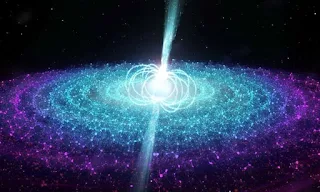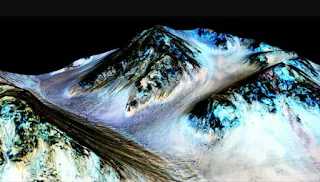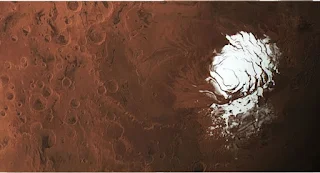INTRODUCTION:
Stellar
evolution is the process by which a star changes over the course of a time. Depending
on the mass of the star, its lifetime can range from a few million years for
the most massive to trillions of years to least massive which are considerably
longer than the age of the universe. All stars are born from collapsing clouds
of gas and dust, often called Nebulae or molecular clouds. Over the course of
millions of years, these protostars settle down into a state of equilibrium, becoming what is known as a main sequence star. Depending on their mass, they
reach the end of their evolution as whitedwarf, neutron star or black hole.
NEBULA:
— Nebula is a cloud of hydrogen gas and
dust. It is a birthplace of stars. A protostar is a very young star that is
still gathering mass from its parent molecular cloud. The protostellar phase is
the earliest one in the process of the stellar evolution. For a low mass star,
it lasts about 500000 years. Protostars are usually surrounded by dust, which
blocks the light they emit, so they are difficult to observe in the visible
spectrum.
AVERAGE STAR:
— After a part of nebula gains
sufficient mass, it begins to collapse under its own gravity. As a result, the
increased pressure in the core triggers nuclear fusion of hydrogen into helium.
This stops further gravitational collapse and the star is officially born. The
size of the star at this point will set the course for the rest of its life. The star with the mass between 0.5 to 8 times
the mass of our sun is considered as an ‘average star’.
RED GIANT:
— A Red giant is a luminous giant star
of low or intermediate mass in a late phase of stellar evolution. The most
common red giant is stars on the red giant branch that are still fusing
hydrogen into helium core.
PLANETARY NEBULA:
— All planetary nebulae form at the end of intermediate massed star's lifetimes. They are a relatively short-lived phenomenon, lasting perhaps a few tens of thousands of years, compared to a considerably longer phases of stellar evolution. Once all of the red giant's atmosphere has been dissipated energetic ultraviolet radiation from the exposed hot luminous core, called a planetary nebula nucleus (PNN), ionizes the ejected material. Absorbed ultraviolet light then energises the shell of nebulous gas around the central star, causing it to appear as a brightly coloured planetary nebula.

WHITE DWARF:
— A white dwarf is a very dense star
that is the end stage of average star life. After the star runs out of helium,
the star will try to combine carbon, which the star can’t combine. So the gas
spreads apart from the star leaving behind a carbon dense white dwarf. When the
white dwarf runs out of its remaining energy it loses its brightness and
becomes a brown dwarf.
MASSIVE STARS:
— Massive stars are born, just like
average stars out of clouds of dust called nebula. When a nebula collects
enough mass it begins to collapse under its own gravity. The internal pressure
created by this collapse is enough to trigger fusion of hydrogen deep in its
core. When nuclear fusion begins a star is born. When a star is considered
massive if it is at least 8 times more massive than our sun.
RED SUPERGIANT:
— They are the largest stars in the
universe in terms of volume, although they are not the most massive or luminous. Betelgeuse and Antares are the brightest and best known red super giants, indeed
the only first magnitude red supergiant stars. They are much cooler than the
sun and are observed to rotate slowly or very slowly.
SUPERNOVA:
— A supernova is an event that occurs
upon the death of certain type of stars. A supernova is the explosion of a star. It is the largest explosion that takes place in space. The most recent directly observed
supernova in the milky way was Kepler’s supernova in 1604.
NEUTRON STARS:
— Neutron stars are created when giant
stars die in supernovas and their cores collapse, with the proton and electrons
essentially melting into each other to form neutrons. Neutron stars rotate
extremely rapidly after their formation due to the conservation of angular
momentum.
BLACK HOLES:
— Black holes are incredibly massive
but cover only smaller region. Virtually noting can escape from them. Under
classical physics even light is trapped by a blackhole. A black hole
can be formed by death of a massive star. A black hole is a region of a
space-time exhibiting such strong gravitational effects that nothing can escape from it.
HR DIAGRAM:
The
Hertzprung-Russell diagram is a graphical tool that astronomers use to classify
stars according to their luminosity, special type, color, temperature and
evolutionary stage.
Stars are stable phase of hydrogen
burning lie along the main sequence
according to their mass. After a star uses up all the hydrogen in its
core, it leaves the main sequence and moves towards the red giant branch. The
most massive stars may also become red supergiants, in the upper right corner
of the diagram.
The lower left corner is reserved for the white dwarfs.
Submitted by:
Ezitha Monteiro
Delvita Veigas
Divyashree
Keerthana
I M Sc Physics
Reference
Internet
Journal


































